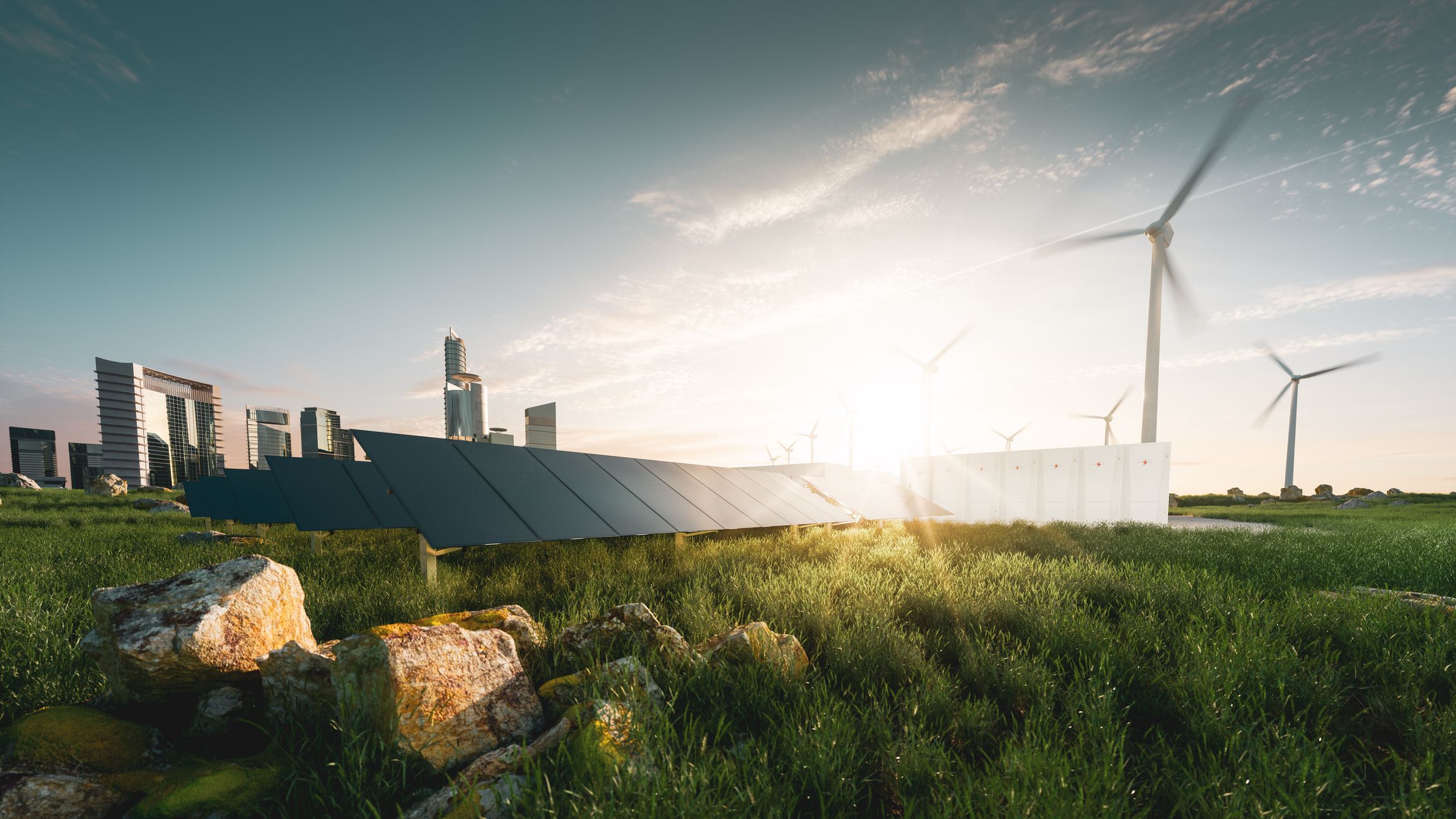AIIB partners with Malaysian banks for infrastructure projects – Fund Selector Asia

Report on AIIB Partnership with ASEAN Banks for Sustainable Infrastructure Development
Executive Summary
The Asian Infrastructure Investment Bank (AIIB) has entered into strategic cooperation agreements with four major Malaysian banks: Maybank, CIMB, AmBank, and BPMB. This partnership aims to mobilize up to USD 6 billion in financing for infrastructure projects across the ASEAN region that are both sustainable and technologically advanced. The initiative directly supports the United Nations Sustainable Development Goals (SDGs) by focusing on green infrastructure, regional connectivity, and private capital mobilization to address the region’s significant infrastructure requirements.
Alignment with Sustainable Development Goals (SDGs)
The collaboration is fundamentally aligned with AIIB’s corporate strategy and contributes to several key SDGs. The core thematic priorities of the partnership include:
- Green Infrastructure: Directly addressing SDG 7 (Affordable and Clean Energy) and SDG 13 (Climate Action) by financing projects in renewable energy and sustainable power systems.
- Connectivity and Regional Cooperation: Supporting SDG 9 (Industry, Innovation and Infrastructure) by building resilient transport and digital networks, and SDG 17 (Partnerships for the Goals) through cross-border cooperation and multi-stakeholder engagement.
- Technology-Enabled Infrastructure: Fostering innovation in line with SDG 9 and contributing to the development of SDG 11 (Sustainable Cities and Communities) through modern digital and telecommunications infrastructure.
- Private Capital Mobilisation: Acting as a catalyst to achieve SDG 17 by leveraging private sector finance to supplement public investment in sustainable development.
Target Investment Sectors and SDG Impact
The partnership will channel investments into sectors critical for sustainable development in the ASEAN region. The primary focus areas are:
- Energy Sector: Investments in renewable energy generation, power transmission, and distribution networks will enhance energy security and promote a transition to cleaner energy sources, directly contributing to SDG 7.
- Transport and Connectivity: Funding for sustainable transport solutions will improve regional connectivity, facilitate trade, and reduce the carbon footprint of the logistics sector, supporting SDG 9 and SDG 11.
- Digital Infrastructure: Development of digital and telecommunications infrastructure will bridge the digital divide, foster innovation, and create inclusive economic opportunities, aligning with targets under SDG 9.
Strategic Regional Initiatives: The ASEAN Power Grid (APG)
A significant component of this collaboration is the support for key regional initiatives such as the ASEAN Power Grid (APG). This cross-border platform is designed to strengthen energy interconnection and security throughout Southeast Asia.
- AIIB has committed up to USD 2 billion for APG-related investments, reinforcing its dedication to regional cooperation as outlined in SDG 17.
- By promoting an integrated and efficient regional energy market, the APG initiative advances the goals of SDG 7 by improving access to reliable and sustainable energy for all.
Conclusion and Forward Outlook
The agreements, which have an initial term extending to October 2031, represent a long-term commitment to fostering sustainable and resilient infrastructure. By combining the regional expertise of the Malaysian banking partners with AIIB’s capacity for long-term capital provision, this partnership is poised to make a substantial contribution to achieving the Sustainable Development Goals across the ASEAN region. The collaboration reaffirms a shared commitment to financing infrastructure that is green, technologically advanced, and regionally connected for a sustainable future.
Analysis of SDGs, Targets, and Indicators
1. Which SDGs are addressed or connected to the issues highlighted in the article?
The article highlights several issues that directly connect to four main Sustainable Development Goals (SDGs):
- SDG 7: Affordable and Clean Energy – The focus on financing “renewable energy” and strengthening “power transmission and distribution” and “energy interconnection” directly addresses the goal of ensuring access to affordable, reliable, sustainable, and modern energy for all.
- SDG 9: Industry, Innovation, and Infrastructure – The core theme of the article is mobilizing finance for “sustainable and technology-enabled infrastructure projects,” including “transport, digital infrastructure and telecommunications.” This aligns perfectly with the goal of building resilient infrastructure, promoting inclusive and sustainable industrialization, and fostering innovation.
- SDG 13: Climate Action – By prioritizing “green infrastructure” and “renewable energy” projects, the initiative described in the article contributes to climate change mitigation efforts, which is the central aim of SDG 13.
- SDG 17: Partnerships for the Goals – The entire article is about a partnership. The “cooperation agreements” between the Asian Infrastructure Investment Bank (AIIB) and several Malaysian banks (Maybank, CIMB, AmBank, BPMB) to “jointly mobilise up to $6bn in financing” and “catalise private capital mobilization” is a clear example of a multi-stakeholder partnership to achieve sustainable development.
2. What specific targets under those SDGs can be identified based on the article’s content?
Based on the article’s content, the following specific targets can be identified:
- Under SDG 7 (Affordable and Clean Energy):
- Target 7.2: By 2030, increase substantially the share of renewable energy in the global energy mix. The article explicitly states that the partnerships will support investments in “renewable energy.”
- Target 7.a: By 2030, enhance international cooperation to facilitate access to clean energy research and technology, including renewable energy. The collaboration between the international AIIB and regional banks to finance renewable energy projects is a direct implementation of this target.
- Under SDG 9 (Industry, Innovation, and Infrastructure):
- Target 9.1: Develop quality, reliable, sustainable and resilient infrastructure, including regional and transborder infrastructure, to support economic development and human well-being. The article’s focus on “sustainable and technology-enabled infrastructure projects,” “transport,” “digital infrastructure,” and “regional connectivity” directly supports this target. The mention of the “APG, a cross-border platform to strengthen energy interconnection” is a specific example of transborder infrastructure.
- Target 9.a: Facilitate sustainable and resilient infrastructure development in developing countries through enhanced financial, technological and technical support. The AIIB’s role in providing “up to $6bn in financing” and “long-term capital through both debt and equity financing instruments” is a clear mechanism for facilitating this development in the ASEAN region.
- Under SDG 13 (Climate Action):
- Target 13.a: Implement the commitment undertaken by developed-country parties to the United Nations Framework Convention on Climate Change to a goal of mobilizing jointly $100 billion annually by 2020 from all sources to address the needs of developing countries in the context of meaningful mitigation actions. The mobilization of “$6bn in financing” for “green infrastructure” is a direct contribution to climate finance for mitigation actions.
- Under SDG 17 (Partnerships for the Goals):
- Target 17.3: Mobilize additional financial resources for developing countries from multiple sources. The article describes a plan to “jointly mobilise up to $6bn in financing” and “catalise private capital mobilization,” which directly addresses this target.
- Target 17.17: Encourage and promote effective public, public-private and civil society partnerships, building on the experience and resourcing strategies of partnerships. The agreement between the AIIB (a multilateral development bank) and private/national banks (Maybank, CIMB, etc.) is a prime example of a public-private partnership model for sustainable development.
3. Are there any indicators mentioned or implied in the article that can be used to measure progress towards the identified targets?
While the article does not mention specific UN indicator codes, it provides information that can be used as practical, high-level indicators to measure progress:
- Total financial resources mobilized: The article explicitly states a goal to “jointly mobilise up to $6bn in financing.” This amount serves as a direct indicator for Target 17.3 and Target 13.a. It can be tracked against the total amount committed and disbursed.
- Investment in renewable energy capacity: The financing directed towards “renewable energy” projects can be measured in dollars invested or in megawatts of new capacity installed, which would serve as an indicator for Target 7.2.
- Development of cross-border infrastructure: The progress of the “APG, a cross-border platform to strengthen energy interconnection,” is a measurable outcome. The AIIB’s commitment to “provide up to $2bn for APG-related investments” is a specific financial indicator for this aspect of Target 9.1.
- Number and scope of infrastructure projects: The number of projects financed in sectors like “transport, digital infrastructure and telecommunications” can be tracked to measure progress towards building sustainable infrastructure under Target 9.1.
4. Summary Table of SDGs, Targets, and Indicators
| SDGs | Targets | Indicators (Identified or Implied in the Article) |
|---|---|---|
| SDG 7: Affordable and Clean Energy | 7.2: Increase the share of renewable energy. 7.a: Enhance international cooperation for clean energy. |
– Amount of financing allocated to “renewable energy” projects. – Development of “energy interconnection” platforms like APG. |
| SDG 9: Industry, Innovation and Infrastructure | 9.1: Develop quality, reliable, sustainable and resilient infrastructure. 9.a: Facilitate sustainable infrastructure development in developing countries. |
– Number and value of projects in “transport, digital infrastructure and telecommunications.” – Amount of financing provided by AIIB for infrastructure ($6bn total, $2bn for APG). |
| SDG 13: Climate Action | 13.a: Mobilize climate finance. | – Total funds mobilized ($6bn) for “green infrastructure” as a contribution to climate finance. |
| SDG 17: Partnerships for the Goals | 17.3: Mobilize additional financial resources. 17.17: Encourage effective public-private partnerships. |
– The establishment of the cooperation agreement itself. – The total amount of “private capital mobilisation” catalyzed by the partnership. – The total value of the joint financing agreement (“up to $6bn”). |
Source: fundselectorasia.com
What is Your Reaction?
 Like
0
Like
0
 Dislike
0
Dislike
0
 Love
0
Love
0
 Funny
0
Funny
0
 Angry
0
Angry
0
 Sad
0
Sad
0
 Wow
0
Wow
0




















































.jpg.webp?itok=0ZsAnae9#)

























